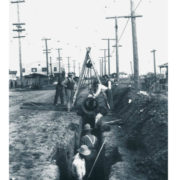Drought Conditions Spread Over Much Of California
Sixteen days into summer, with wildfires raging over the bone-dry landscape and more scorching hot days ahead, it might feel as if California is on the verge of another drought. The official word from weather authorities shows much of the state trending in that direction. Abnormally dry or drought conditions prevail over 85 percent of California, including the coast from Monterey County to the Oregon border, the U.S. Drought Monitor said Thursday. Nearly all of Lake County and parts of eastern Napa and Mendocino counties are now in moderate drought, authorities said.



